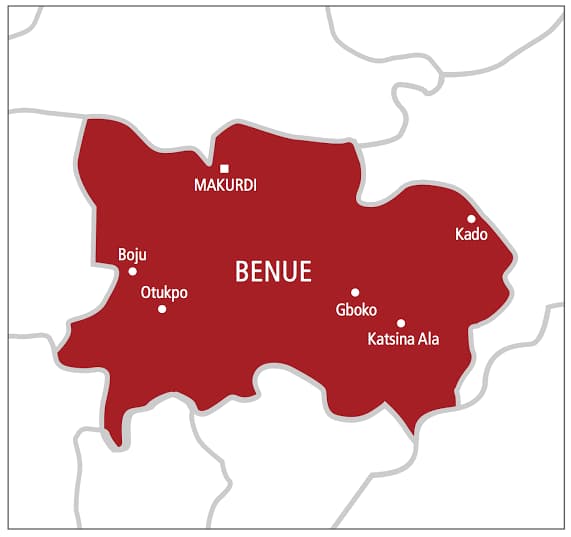In a recent Senate debate on the 2025 Federal Capital Territory (FCT) budget, Senator Onyekachi Nwebonyi sparked controversy by proposing the relocation of communities near Abuja’s Nnamdi Azikiwe International Airport. His argument? The sight of “old houses” and informal settlements, such as those in Chika, Aleita, Piwoyi, and Kuchingoro, presents a poor image of Nigeria to international visitors arriving at the capital’s gateway. While the proposal aims to polish Abuja’s global reputation, it has ignited a broader discussion about urban development, social justice, and the ethics of prioritizing aesthetics over the livelihoods of vulnerable communities. This blog post delves into the nuances of Nwebonyi’s proposal, the Senate’s response, the socioeconomic realities of these communities, and alternative approaches to balancing Nigeria’s national image with the rights of its citizens.
The Context of the Proposal
Abuja, Nigeria’s capital, was designed in the 1970s as a planned city to embody national unity and modernity, distinct from the ethnic and historical complexities of Lagos. The Nnamdi Azikiwe International Airport serves as the first point of contact for many visitors, making its surroundings a symbolic representation of Nigeria’s aspirations. However, communities near the airport, often characterized by modest or dilapidated structures, contrast with the sleek infrastructure of the capital’s core. Senator Nwebonyi, representing Ebonyi North, argued during the Senate’s budget debate that these settlements—described by some as “shanties”—undermine Nigeria’s image. He urged FCT Minister Nyesom Wike to prioritize their removal and the development of modern infrastructure to create a more appealing corridor for travelers.
Nwebonyi’s proposal reflects a broader concern among some Nigerian leaders about how the country is perceived globally. Abuja’s master plan envisioned a city free of informal settlements, with orderly development and world-class amenities. The presence of communities like Chika and Aleita, which have grown organically over decades, clashes with this vision. For Nwebonyi, relocating these communities is a step toward aligning the airport’s surroundings with the capital’s intended aesthetic.
The Senate’s Response and Ethical Concerns
The proposal faced immediate pushback in the Senate, culminating in its rejection through a voice vote. Senate President Godswill Akpabio, a key figure in the debate, challenged Nwebonyi’s perspective, emphasizing the human cost of relocation. “That is somebody’s village, and that is what they can afford!” Akpabio remarked, highlighting that these communities are not merely aesthetic nuisances but homes to real people with limited resources. His comments underscore a critical ethical issue: the potential displacement of low-income families and ancestral landowners for the sake of superficial improvements.
The communities in question are inhabited by a mix of indigenous residents, who view the land as their ancestral heritage, and low-income earners who have settled there due to Abuja’s high cost of living. Forcing these residents to relocate risks disrupting their livelihoods, social networks, and access to economic opportunities in the capital. Nigeria’s history of forced evictions, such as those under former FCT Minister Nasir El-Rufai in the early 2000s, offers a cautionary tale. Past relocations in areas like Jabi and Utako often left residents without adequate compensation or viable resettlement options, leading to homelessness or further marginalization.
Moreover, Akpabio pointed out that the airport corridor already features modern infrastructure, such as flyovers, streetlights, and well-paved roads. This raises the question of whether the visual “problem” of old houses is significant enough to justify the social upheaval of relocation. The Senate’s rejection of the proposal suggests a broader recognition that national image cannot come at the expense of human dignity.
Socioeconomic Realities and Systemic Challenges
The communities near Abuja’s airport are a microcosm of Nigeria’s broader socioeconomic challenges. The country faces a severe housing deficit, with an estimated 28 million-unit shortage as of 2023, according to the Federal Mortgage Bank of Nigeria. In Abuja, where land and housing costs are among the highest in the country, low-income earners and informal workers often have no choice but to settle in peripheral areas like Chika or Piwoyi. These settlements, while visually unappealing to some, are practical responses to systemic issues like poverty, unemployment, and lack of affordable housing.
Relocating these communities without addressing these root causes risks merely shifting the problem to another part of the FCT or beyond. Past resettlement efforts, such as those in Apo, Galuwui/Shere, and Wasa, have faced criticism for poor planning and inadequate infrastructure in new sites. For example, relocated residents often find themselves far from economic hubs, with limited access to jobs, schools, or healthcare. This not only undermines their quality of life but also perpetuates the cycle of poverty that led to informal settlements in the first place.
Additionally, the cultural and historical significance of these areas complicates the issue. Many residents of Chika, Aleita, and surrounding communities are indigenous to the FCT and view the land as their ancestral home. Displacing them for cosmetic reasons risks alienating these communities and erasing their heritage, raising questions about whose vision of “modernity” is being prioritized. Is it the residents who call these places home, or the international visitors whose fleeting impressions Nwebonyi seeks to shape?
Potential Merits of the Proposal
While the proposal has drawn significant criticism, it’s worth considering the potential benefits of improving the airport corridor. A polished, modern aesthetic could reinforce Abuja’s status as a capital city designed to project national pride and unity. For a country often grappling with negative stereotypes about governance and infrastructure, a visually appealing gateway could signal ambition and progress. In theory, such improvements could attract more foreign investment, tourism, and diplomatic goodwill, aligning with the original intent of Abuja’s master plan.
Moreover, upgrading the areas around the airport could improve living conditions for residents if done thoughtfully. Investments in roads, sanitation, electricity, and housing could transform these communities without necessitating relocation. However, this assumes a level of government commitment to inclusive development that has often been lacking in past FCT projects. The risk is that “upgrading” becomes a pretext for demolition and displacement, prioritizing aesthetics over people.
Alternative Approaches to Urban Development
Rather than resorting to relocation, there are several alternative strategies the FCT administration could pursue to address both the aesthetic concerns and the needs of residents:
-
In-Situ Upgrading: Instead of demolishing settlements, the government could invest in improving infrastructure within these communities. This could include paving roads, installing streetlights, improving sanitation, and providing access to clean water. Such upgrades would enhance living conditions while preserving residents’ social and economic ties to the area. Examples like Kenya’s Mukuru slum upgrading project show how targeted investments can transform informal settlements without displacement.
-
Affordable Housing Initiatives: Addressing Nigeria’s housing crisis requires scalable solutions like subsidized housing or public-private partnerships to build affordable units. The FCT could pilot such projects near the airport, allowing residents to remain in the area while transitioning to formal housing.
-
Community Engagement: Inclusive urban planning that involves residents in decision-making ensures that development respects local histories and needs. Community consultations could identify priorities, such as better schools or healthcare facilities, that align with both residents’ needs and the government’s vision for a modern capital.
-
Robust Resettlement Plans: If relocation is unavoidable, the government must prioritize well-planned resettlement sites with adequate infrastructure. Past efforts in Yangoji and Pegi have shown mixed results, with some residents struggling due to distance from economic centers. Future plans must include schools, markets, and transport links to ensure sustainability.
-
Public Awareness Campaigns: To address the “image” concern, Nigeria could invest in showcasing its cultural and economic strengths through media and tourism campaigns, rather than hiding signs of poverty. A confident nation embraces its complexities while working toward progress, rather than erasing them for the sake of appearances.
Conclusion: Striking a Balance
Senator Nwebonyi’s proposal to relocate communities near Abuja’s airport highlights the tension between Nigeria’s global ambitions and its domestic realities. While a modern, polished capital is a legitimate goal, it cannot come at the expense of the very citizens it seeks to represent. The Senate’s rejection of the proposal reflects a broader understanding that national pride is not just about aesthetics but about justice, inclusion, and progress for all. By prioritizing in-situ upgrades, affordable housing, and community-driven development, Nigeria can create an airport corridor that reflects both its aspirations and its commitment to its people.
The debate over these communities is a reminder that urban development is not just about buildings but about the lives they shelter. As Nigeria navigates its path toward modernity, it must ensure that no one is left behind in the pursuit of a “better image.” What are your thoughts on how Nigeria can balance its global image with the rights of its citizens? Share your views in the comments below!
Join our Whatsapp channel to stay updated always!


